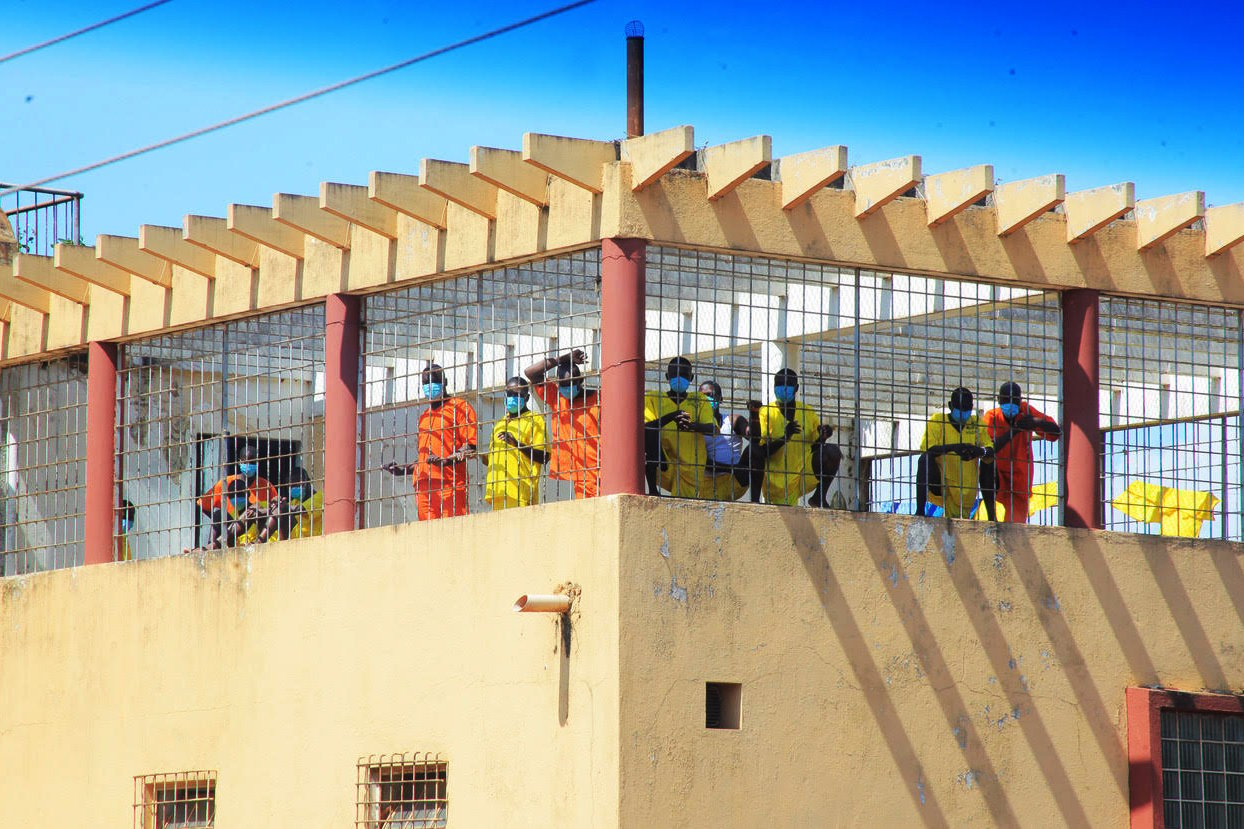Prime
‘HIV in prisons is a ticking time bomb’

Inmates at Luzira prisons. Transmission of HIV among jailed persons is attributed to same sex intimacy, and sharing of sharp objects. PHOTO/FILE
What you need to know:
- There is an urgent need for comprehensive measures to address the issue, including improved access to care, reduced stigma, and increased funding.
A new House report released midweek has revealed that the Human Immune Virus (HIV) prevalence in Uganda’s detention facilities is more than three times the reported national average.
The report drafted by the Parliamentary Committee on HIV/Aids in March, for instance, states that “in Dyanga Prison in Kiryandongo District, the prison facility recorded 18.7 percent; Gulu Main Prisons 18.6 percent and Kitgum Prisons 10 percent HIV prevalence, respectively.”
It adds: “The aforementioned findings were in agreement with the Uganda Prisons Service (UPS) Sero-Behavioural Survey Report published in 2019, which revealed that the HIV prevalence among prisoners was at 15 percent and among staff at 12 percent while the latest national community average is at 5.4 percent.”
It reasons: “The explanation for this difference is not due to infections taking place within detention, but could be due to the fact that all detainees undergo a thorough medical check-up on admission, including HIV testing.”
The report adds: “There is also the possibility of some detainees being in the window period at the time of admission.”
Transmission of HIV among detained or jailed persons is attributed “to same sex intimacy, delays in the window period and sharing of sharp objects supposedly for hygiene purposes.”
The government was therefore ordered to institute a thorough scientific study into homosexuality in jail to inform comprehensive containment measures.
Ms Sarah Netalisire, the chairperson of the HIV/Aids committee, revealed that the situation could be much worse since police authorities use a questionable approach, which causes stigma.
“What they normally do in [the] police, they just assemble people on assembly in the morning and then they ask: ‘who of you is HIV positive?’ The issue of privacy isn’t adhered to,” she says.
Ms Netalisire says the stigma surrounding HIV has made it difficult for prisoners to openly disclose their status, leading to drug resistance and adherence challenges.
Capacity crippled
Conditions within the said facilities could worsen the situation due to the inadequate capacity of police and the UPS to provide therapy and medical support to HIV patients.
It was discovered that the “[police] had only 13 accredited [Anti-Retroviral Therapy] centres, while UPS had only 45 ART accredited centres, which the committee finds inadequate given the number of clients who may wish to seek HIV services.”
The 13 police facilities are located in Nsambya, Naguru, Jinja, Tororo, Mbale, Katakwi, Gulu and Arua. With others in Hoima, Kabarole, Mbarara, Rukungiri, and Masaka districts.
“Some police stations in the districts of Amuru and Bukomansimbi did not have police health centres to provide healthcare services to suspects, police officers, their immediate family, and the immediate communities, who may require HIV service delivery,” the report reads.
The committee also reported that the “government had recruited as few as only four health workers to attend to and provide HIV healthcare services to suspects, police officers, their immediate families and neighbouring communities.
Like the case of Sembabule Police Health Centre II, requisite facilities for HIV service delivery such as testing kits, supportive IT infrastructure were inadequate.
Data in the report shows that Uganda has 260 prison facilities choking on a 71,354 prisoner population.
Overall, these facilities are manned by 10,385 prison warders, reflecting a staff-to-inmate ratio of 1:7, which is higher than the recommended ratio of 1:4.
Recommendations
On March 21, the MPs reviewed written submissions from police and prisons officials.
The House committee interfaced with the Ministry of Internal Affairs, police, UPS, resident district commissioners, heads of police health units, chief administrative officers and city clerks, among others.
Parliament hopes that the government will implement their recommendations to boost HIV prevention in the said detention places, enhance access to HIV care, treatment and support services for infected persons, and also step up measures to wipe out stigma and discrimination.
For now, MPs are disappointed that months after they issued their findings, hardly any action has been taken to cure the situation.
Mr Godfrey Wakooli, who sits on the Defence and Internal Affairs Committee, which first unearthed the matter in August last year, said: “It is regrettable that the HIV prevalence in prisons is alarming”.
“We recommended that some offences which are not supposed to send people to these establishments should be [punished] under the community service law,” Mr Wakooli says.
He also recommends that the government provides more funding to the prisons and police to help them create more space and provide better HIV/Aids services in jails.
Ms Netalisire says her committee also recommends that separate facilities be set up to house persons who test HIV-positive.
She did not, however, say whether this proposal would effectively promote stigma and discrimination – which are issues they set out to weed out.
Genesis
The committee report on HIV/Aids in prisons and related matters is a follow-up on findings established by the House Committee on Defence and Internal Affairs last year where it was revealed that there is 15 percent and 12.5 percent prevalence among prisoners and prison staff, respectively.
Lawmakers assessed levels of accessibility to HIV/Aids services offered in detention places.
Statistics
- 99 percent of HIV diagnosis is done at inmates’ point of entry into detention centre
- 10 percent cases contract it in jail
- 71,354 is Uganda Prisons Service prisoner population
- 260 prison facilities in Uganda
- Occupancy rate of 355 percent in the 260 prisons facilities in Uganda
- 10,385 staff position in prison facilities across country
- Staff ratio to inmate is 1:7 against the recommended 1:4
- 1,315 HIV infected prisoners
- Of the 47 new infected prisoners, 50 percent (23) contracted it while in jail
- Police had only 13 accredited ART centres
- Uganda prisons had only 45 accredited Anti-Retroviral Therapy (ART) centres




